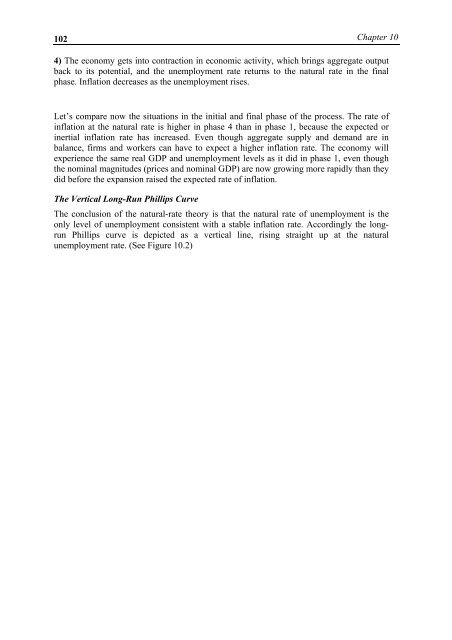MacroeconomicsI_working_version (1)
You also want an ePaper? Increase the reach of your titles
YUMPU automatically turns print PDFs into web optimized ePapers that Google loves.
102<br />
Chapter 10<br />
4) The economy gets into contraction in economic activity, which brings aggregate output<br />
back to its potential, and the unemployment rate returns to the natural rate in the final<br />
phase. Inflation decreases as the unemployment rises.<br />
Let’s compare now the situations in the initial and final phase of the process. The rate of<br />
inflation at the natural rate is higher in phase 4 than in phase 1, because the expected or<br />
inertial inflation rate has increased. Even though aggregate supply and demand are in<br />
balance, firms and workers can have to expect a higher inflation rate. The economy will<br />
experience the same real GDP and unemployment levels as it did in phase 1, even though<br />
the nominal magnitudes (prices and nominal GDP) are now growing more rapidly than they<br />
did before the expansion raised the expected rate of inflation.<br />
The Vertical Long-Run Phillips Curve<br />
The conclusion of the natural-rate theory is that the natural rate of unemployment is the<br />
only level of unemployment consistent with a stable inflation rate. Accordingly the longrun<br />
Phillips curve is depicted as a vertical line, rising straight up at the natural<br />
unemployment rate. (See Figure 10.2)




